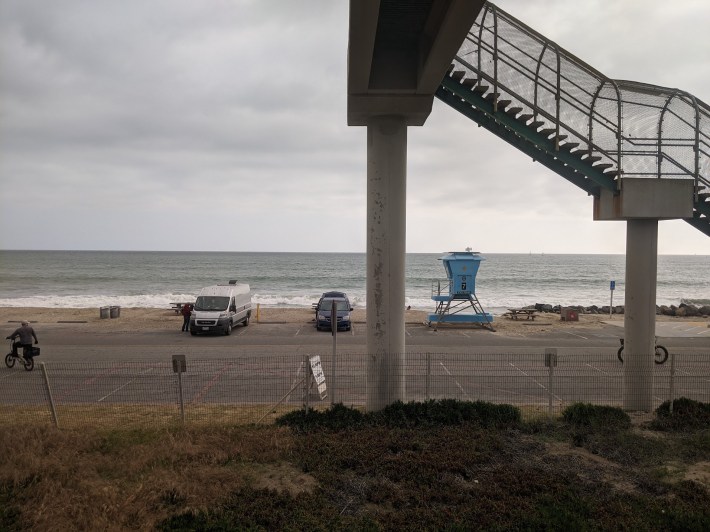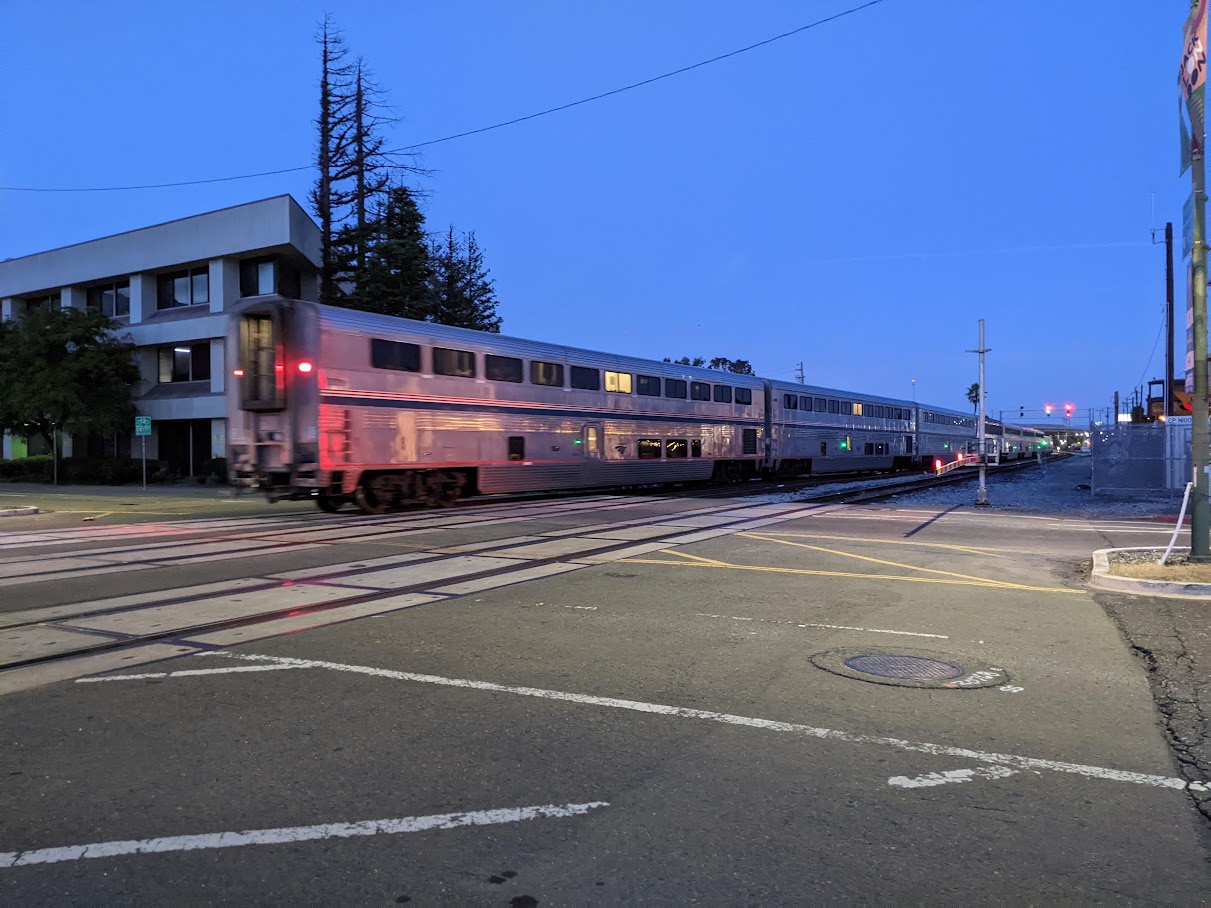I was heading to the Oakland estuary one recent evening for my regular constitutional along the shore near my home in Jack London Square. As I passed the Amtrak station, I noticed a cross-country train at the platform. I asked the conductor—it was the southbound Coast Starlight, Amtrak's train from Seattle to Los Angeles, running a whopping twelve hours late.
The train, which normally travels between Oakland and Los Angeles during the day, instead made the journey overnight. I've long advocated for a sleeper train between the Bay Area and Los Angeles, but this is not what I had in mind!
The conductor explained that a freight train had broken down in front of them up the line, on a section of single track. It took all day to get the freight moving again, so the Starlight, with its hundreds of passengers on board, was simply stuck.
California has some of the nation's most heavily used passenger rail lines—including the Capitol Corridor between the Bay Area and Sacramento and the San Joaquin to the Central Valley, which share part of their route with the Coast Starlight. They contend with miles upon miles of single-track sections.
The Pacific Surfliner between San Luis Obispo and San Diego is also frequently delayed because of single track. I was recently on a train that got stuck on a single-track section at Capistrano Beach for an hour because some prankster phoned Amtrak and told them someone got run over by our train. Every train up and down the line had to stop and wait while police came and looked for the supposed victim. Worse yet, the Surfliner doesn't run all the way to San Diego for months at a time because of crumbling cliffs and high tides where it hugs the coast.

And yet all of the trains I mentioned are packed. They carry millions of passengers every year, a testament to how desperate Californians are for alternatives to traffic and airport hassles.
One of the arguments that opponents of California's High-Speed Rail project make is that the state should instead invest heavily in double-tracking and upgrading its existing rail lines instead of building an all-new, super fast alignment in the Central Valley. That's a spurious argument; California should finish its high-speed rail project. But it should also invest serious money on improving the coastal routes of the existing network. In fairness, there's been work to double-track the Pacific Surfliner over the years—but it has proceeded at a snail's pace because the funding trickles in. The state should instead take all money currently dedicated to freeway widening and invest it in double-tracking the entire rail system, along with eliminating curves and other choke points in its aged network that cause delays. There's also an obvious need to move the coastal tracks inland between Orange County and San Diego, because these sections are rapidly falling into the ocean. Back in Northern California, they should accelerate and upgrade plans to expand SMART and connect it to Amtrak's network. And they should restore all routes to parts of California that used to have rail service and still have surviving alignments, such as Santa Cruz and California's Mendocino Coast. Albeit, allowing single-tracking sections in these lower-population areas is probably sufficient.
They should also electrify all the main intercity routes, such as between Los Angeles and San Diego. Some of these improvements are covered in the aspirational but unfunded State Rail Plan. However, with the exception of Caltrain and the High-Speed Rail Program, rail planners are still talking about hydrogen for electrification. That's just a petroleum-industry scheme, since nearly all hydrogen is currently derived from oil. The goal should be to follow Caltrain's example and use tried-and-true overhead wire that connects the trains directly into the grid. That's what they do on the East Coast and in the rest of the developed world. Trains powered by overhead wire run on anything that can turn a generator or produce electrons, from solar to wind to nuclear, without the trains wasting energy carrying around huge fuel tanks.
And in the very near term, California should restore an overnight sleeper service between LA and the Bay Area. This is simply a matter of California hiring Amtrak (or another operator) to run the service, the same way it does with current intercity trains. That would offer a new, low-carbon, low-stress alternative to driving or flying in the short term while we wait for further rail upgrades to make the system faster, smoother, and reliable.
When proponents wrote Prop. 1A, the 2008 bond measure that allowed the state to start building high-speed rail, they made one big mistake—it didn't go far enough. It's time for California to put intercity rail investment on par with the $18 billion it sinks annually into highways every year, to finish high-speed rail, and bring the entire rail network into the 21st Century. Travelers who suffered through monumental traffic jams and huge lines at airports this Memorial Day Weekend (or spent too many hours on slow, unreliable trains) deserve a viable alternative. Let's not curse another generation to the frustrations, delays, and car-wreck-and-pollution deaths caused by our current, subpar transportation system.





